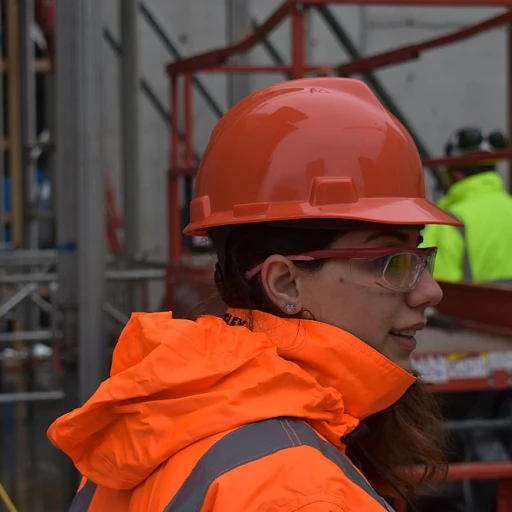
Understanding the Skills Gap in Procurement
Navigating the Skills Void in Procurement
The procurement function has undergone significant changes over time, driven by the evolution of technologies procurement processes and an increased focus on supplier risk management. However, these developments have resulted in a skills gap that organizations must address to ensure effective change management in procurement. Understanding the nature of this gap is the first step toward implementing effective strategies for procurement transformation.
Procurement processes have become more complex, encompassing not just the traditional task of issuing a purchase order but also aspects like supplier collaboration, cost savings, and risk management. These processes demand new competencies that many procurement teams are yet to fully develop. As organizations strive for efficiency and streamlined supply chain management, they encounter resistance from both internal stakeholders and suppliers, highlighting the need for a comprehensive guide to navigating these challenges.
Moreover, the procurement change landscape is constantly evolving, and staying ahead requires continuous learning and adaptation. The reliance on advanced procurement technologies necessitates that teams possess robust technical skills alongside traditional procurement expertise. Best practices in change management demand that supply chain partners, suppliers, and stakeholders work collaboratively, which is only possible when all parties involved possess the required skills.
Addressing this skills gap is not merely about adapting to new technologies but also about fostering a culture of collaboration, innovation, and best practices within procurement teams. It involves empowering people through training support and helping them navigate the ever-changing landscape of procurement change management effectively. Without leadership buy-in and active involvement, even the best technology implementations can fall short.
Key Competencies for Effective Change Management
Essential Skills for Leading Change
To successfully maneuver through change management in procurement, identifying and cultivating key competencies is crucial. Effective skills ensure the procurement function navigates transitions smoothly, reducing resistance and enhancing the overall process. Here are some critical skills necessary for managing procurement changes:- Leadership and Influence: It's essential to guide and motivate procurement teams and stakeholders through transitions. Effective leaders harness influence not just through authority, but by building rapport and trust among team members and suppliers.
- Strategic Thinking: Sound procurement management relies on the ability to anticipate market trends, supplier risk, and potential cost savings. Strategic thinkers can adeptly navigate supply chain shifts and proactively address challenges.
- Communication Skills: Facilitating transparent dialogue with team members, suppliers, and stakeholders is imperative. Strong communication ensures buy-in and reduces resistance during the change process.
- Project Management: Overseeing the procurement transformation involves meticulous planning, risk management, and procurement processes. Effective project management is vital in managing timelines, resources, and supplier agreements.
- Technological Acumen: Understanding and leveraging procurement technologies plays a pivotal role. Familiarity with technologies procurement solutions such as procure pay systems can streamline processes and enhance efficiency.
Challenges in Bridging the Skills Gap
Challenges in Overcoming Barriers to Skill Development
Understanding and addressing the skills gap in procurement is crucial for effective change management. The challenges associated with bridging this gap can be multifaceted, especially when attempting to align procurement teams with new processes and technologies. Here are some of the key challenges:- Resistance to Change: Resistance from procurement teams, stakeholders, and suppliers is a common barrier. It often stems from a comfort with current processes and a fear of the unknown. This resistance can hinder the adoption of procurement transformation and best practices.
- Lack of Leadership Buy-In: Successful change management requires support from all levels of leadership. Without committed buy-in, procurement processes lack the direction and endorsement needed to drive meaningful change.
- Complexity of Procurement Functions: Changes in procurement technologies and systems can be complex, requiring stakeholders to learn new skills. The intricacies involved in integrating these technologies can lead to delays and inefficiencies.
- Supplier Risk Management: Adjustments in procurement processes impacting supplier relationships can introduce risks. This necessitates a delicate balance between implementing cost savings measures and maintaining supplier trust.
- Time Constraints: Allocating sufficient time for training support and skill development is often overlooked in the change process. Rushed implementations compromise the efficacy of procurement change strategies.
Strategies for Upskilling Procurement Teams
Empowering Your Team for Successful Procurement Change
Addressing the skills gap in the procurement function demands a strategic approach to upskilling teams. This preparation is crucial for mitigating risks such as supplier risk and enhancing cost savings within the supply chain. Efficient change management begins with understanding the key competencies required and incorporating these into the development of your staff.
Undertake Comprehensive Training Support
Investing in comprehensive training support is paramount. Training should focus on the critical areas of change processes, procurement technologies, and management procurement. By equipping teams with the skills to manage procurement processes effectively, organizations can foster environments that embrace change and innovation.
Foster Leadership Buy-In
Leadership buy-in is imperative for the success of procurement transformation efforts. Leaders who champion the development of procurement teams and understand the strategic value of the procurement function can guide the organization through waves of change with minimal resistance.
Leverage Best Practices in Procurement Change
Adopting best practices in procurement change involves learning from prior successes and failures. Organizations can facilitate smoother transitions by establishing clear change processes and engaging stakeholders early in the process. This proactive approach helps in minimizing resistance among people involved in the procurement transformation.
Utilize Advanced Procurement Technologies
Procurement technologies play a significant role in streamlining procure pay processes and enhancing the ability to respond to changes swiftly. With the right technologies in place, procurement teams are better equipped to guide the organization through changes and derive meaningful improvements in procurement efficiency.
The Role of Technology in Change Management
The Impact of Technology in Facilitating Change Management
Harnessing the power of technology is pivotal in refining procurement processes and managing change effectively. Implementing modern procurement technologies aids in streamlining the entire procurement function, from purchase order management to supply chain optimization. For organizations aiming to achieve effective change in procurement, technologies can be instrumental in several ways:- Automating Processes: Automating routine procurement processes, such as procure-to-pay cycles, reduces errors and frees up time for teams to focus on strategic activities, thus facilitating smoother transitions.
- Data-Driven Decision Making: Advanced analytics tools provide valuable insights into supplier risk and supply chain dynamics, guiding informed decisions to mitigate risks associated with supplier relationships.
- Enhancing Communication: Technology platforms enable seamless communication channels among stakeholders, minimizing resistance by ensuring that all parties are aligned and informed throughout the change process.
- Supporting Training and Development: Online learning platforms and digital resources offer tailored training support for procurement teams, enabling them to quickly adapt to new processes and technologies.
- Facilitating Leadership Buy-In: Presenting clear data on cost savings and efficiency gains from tech-driven processes can be pivotal in securing leadership buy-in for procurement transformation initiatives.












